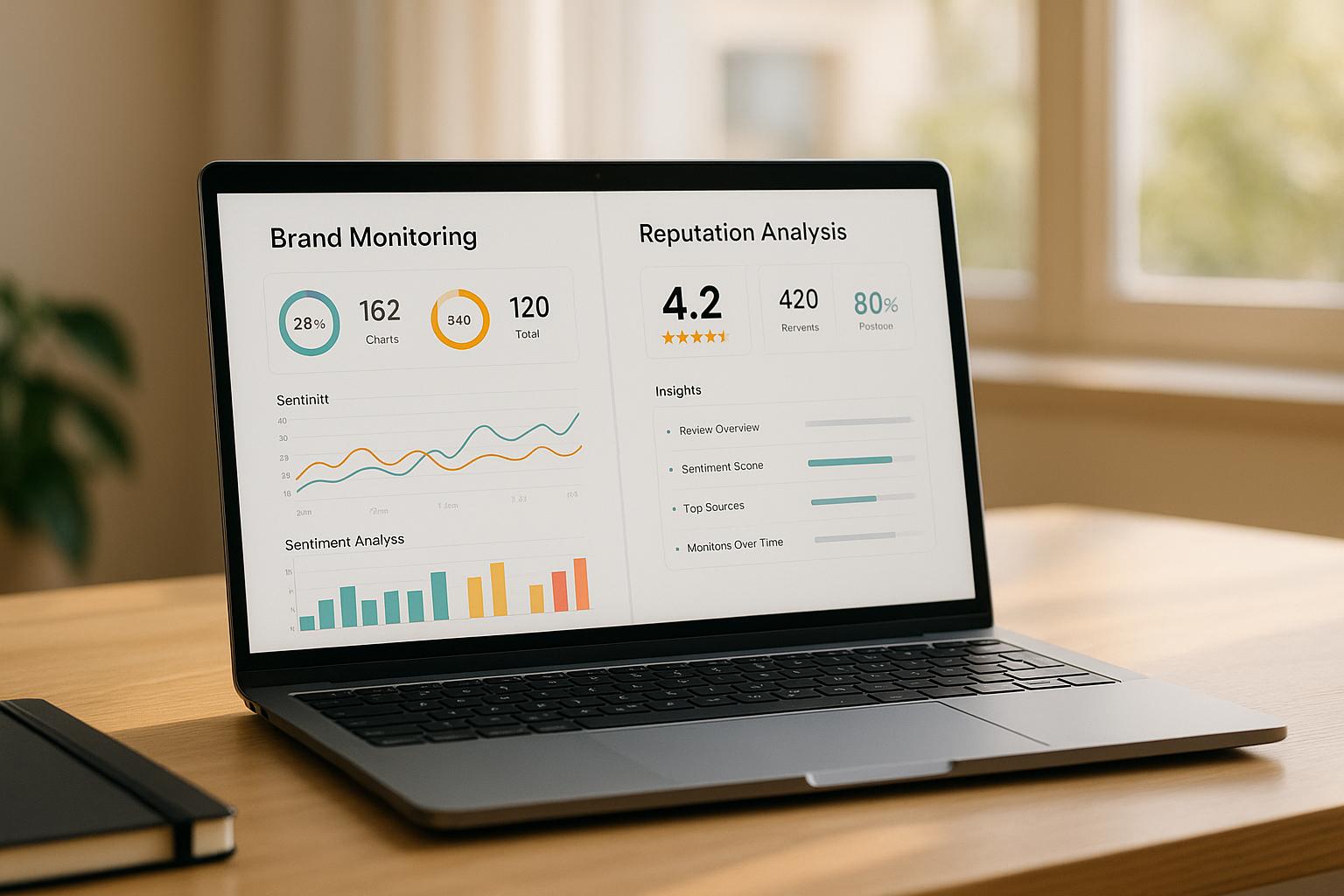Struggling to measure the real impact of your marketing efforts? Multi-touch attribution tools help businesses analyze every customer interaction across their journey, from first touch to final conversion. Unlike single-touch models, these tools distribute credit across multiple touchpoints, providing a clearer picture of what drives results.
Here are five enterprise-ready tools to consider:
- Salesmate: Combines CRM and multi-touch attribution, ideal for tracking long B2B sales cycles.
- Karrot AI: Uses AI to simplify customer journey analysis.
- ThoughtMetric: Tailored for e-commerce, offering multiple attribution models and integrations.
- Hyros: Connects offline phone interactions with digital campaigns for full-funnel insights.
- RollWorks: Focuses on account-based marketing with detailed analytics for enterprise teams.
Quick Comparison Table
| Tool | Best For | Key Features | Starting Price |
|---|---|---|---|
| Salesmate | CRM with attribution | Flexible models, strong integrations | Custom pricing |
| Karrot AI | AI-driven journey analysis | Simplified tracking with AI insights | Custom pricing |
| ThoughtMetric | E-commerce businesses | Multiple models, 60-day attribution window | $99/month |
| Hyros | Offline + digital campaigns | Phone call attribution, real-time reporting | Custom pricing |
| RollWorks | Account-based marketing | Engagement, conversion, and account metrics | Custom pricing |
These tools empower marketers to allocate budgets smarter, refine campaigns, and understand customer behavior across channels. Choose one that aligns with your business goals and data needs.
Mastering Multi-Channel Attribution: Top 5 Tools
What to Look for in Enterprise Multi-Touch Attribution Tools
Choosing the right multi-touch attribution tool for your enterprise is no small task. With 90% of users switching between screens to complete tasks and B2B customer journeys often involving multiple decision-makers and countless touchpoints over extended periods, the stakes are high. Here's a breakdown of the key features to consider when making your decision.
Flexibility in Attribution Models
Your tool should support a range of attribution models, such as time decay, W-shaped, and first-touch. This allows you to match the model to your specific sales cycle. Even more important is the ability to test and adjust these models as customer behavior shifts, ensuring your strategy remains effective over time.
Comprehensive Data Integration
How well your tool integrates with your existing systems can make or break its effectiveness. The best solutions connect seamlessly with CRMs, ad platforms, website analytics, and more. This ensures you capture every relevant touchpoint, both online and offline, without gaps or inconsistencies in your data.
Scalability and Performance
Handling large-scale enterprise data requires a tool that can process millions of interactions across channels in real time without slowing down or compromising accuracy. Scalability is key to ensuring the tool grows with your business and continues to deliver reliable insights.
Advanced Reporting and Analytics
Basic reports won’t cut it. Look for tools that deliver actionable insights tailored to your business goals, whether that’s revenue growth, improved lead quality, or deeper customer engagement. Customizable dashboards and automated reporting features make it easier for stakeholders to interpret and act on the data.
Privacy Compliance and Security
With regulations like GDPR and CCPA becoming standard, compliance is non-negotiable. Ensure the tool adheres to these regulations and prioritizes data security to protect both your business and your customers.
Cookieless Tracking Capabilities
As cookies become less effective due to browser restrictions and privacy laws, your attribution tool must support first-party data strategies and privacy-compliant tracking technologies. This ensures your strategy remains effective in a rapidly changing digital environment.
Ease of Implementation and Support
The right tool should be straightforward to implement, even without deep technical expertise. Vendors that offer robust onboarding, training, and ongoing support can help your team get the most out of the platform.
Cost and ROI Potential
Pricing varies widely, with some tools costing thousands per month. It’s important to weigh the upfront cost against the potential ROI, such as improved marketing efficiency and smarter budget allocation. A tool that pays for itself through better insights and optimized campaigns is a smart investment.
Multi-touch attribution is a critical investment for enterprises, so selecting the right tool is essential. It’s not just about meeting today’s needs but also about staying prepared for future shifts in customer behavior, privacy laws, and marketing technologies.
1. Salesmate
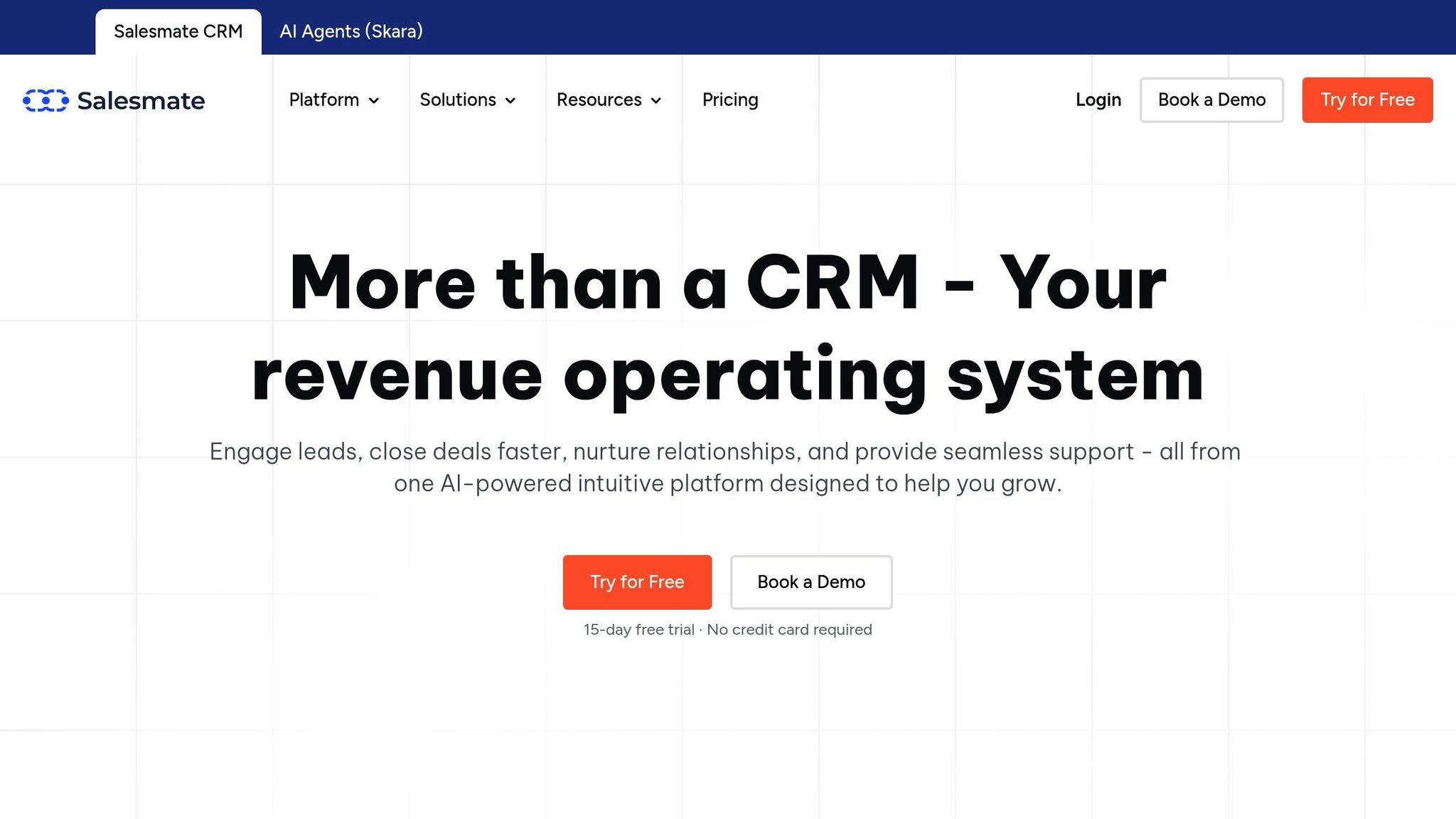
Salesmate is a CRM platform that goes beyond managing customer relationships by incorporating multi-touch attribution. This feature helps track the entire customer journey, from initial contact to conversion, making it especially appealing to mid-market and enterprise businesses seeking a unified approach to sales and marketing analytics.
Flexible Attribution Models
Salesmate provides a variety of attribution models, including first-touch, last-touch, and linear attribution, integrated into its pipeline and deal tracking tools. This flexibility allows users to pinpoint which channels and touchpoints contribute most to closing deals.
What sets Salesmate apart is its ability to track attribution throughout the entire sales cycle. This is particularly valuable for B2B companies with longer decision-making processes. Sales teams can clearly see how prospects move through various stages and identify the specific marketing activities that drive progress. This insight is crucial for understanding which touchpoints hold the most weight in complex sales cycles.
Strong Data Integration
One of Salesmate’s strengths is its ability to integrate with a wide range of platforms, such as HubSpot, Mailchimp, Google Ads, and Facebook Ads. Additionally, it connects with email marketing tools, webinar platforms, and social media management systems. These integrations allow businesses to consolidate touchpoint data from multiple sources into a single, unified timeline.
This centralized view forms the backbone of attribution analysis. However, the effectiveness of these integrations depends on how seamlessly other tools in your marketing stack work with Salesmate's API.
Built for Enterprise-Scale Data
Salesmate’s cloud-based infrastructure is designed to handle large volumes of data without sacrificing performance. Its automation features simplify managing scale by automatically logging interactions and updating attribution data whenever new touchpoints are added. This automation minimizes the manual workload, which becomes critical as the amount of data grows.
Reporting and Visualization Tools
Salesmate excels in its reporting capabilities, offering a customizable dashboard system and pipeline analytics. Users can generate reports that reveal which marketing channels produce the most qualified leads, measure conversion rates by source, and evaluate the time it takes to close deals across different attribution paths.
The platform also includes visual pipeline reports that map out the progression of prospects and highlight conversion-related touchpoints. These visualizations provide actionable insights for sales and marketing teams working together to refine their strategies.
Additionally, revenue reporting ties specific marketing activities directly to closed deals, offering a clear view of ROI for each channel. Custom fields and tags enable businesses to create more detailed attribution reports tailored to their unique needs.
Next, we’ll take a closer look at Karrot AI to explore its multi-touch attribution capabilities for enterprise users.
2. Karrot AI
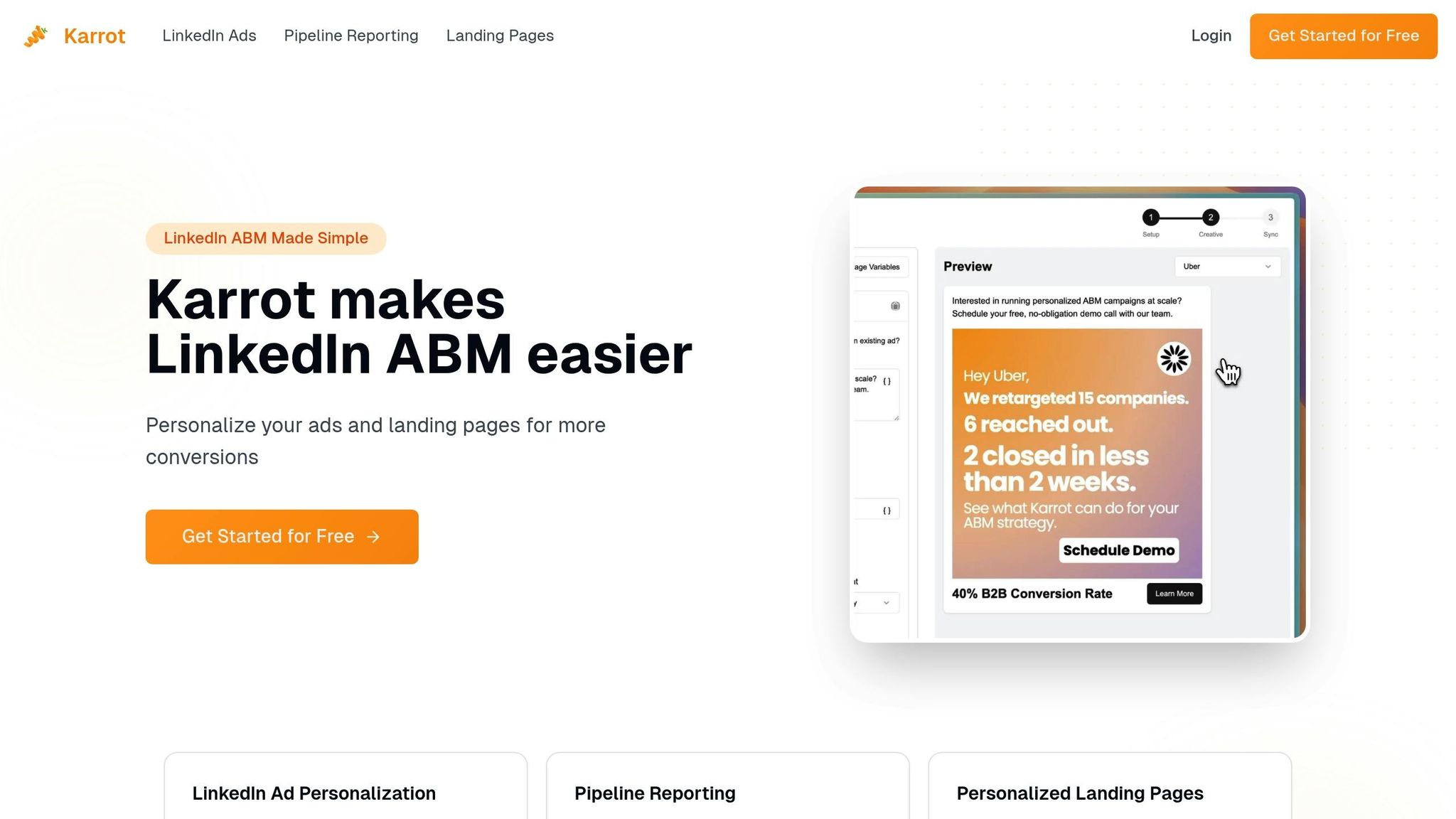
Karrot AI is an advanced platform designed to help businesses track and analyze customer interactions, using artificial intelligence to refine marketing strategies. By examining various customer touchpoints, it aims to provide actionable insights that enhance overall marketing performance. While the specifics of its attribution models aren't publicly detailed, its AI-based system simplifies the process of understanding the customer journey.
Up next, let's dive into ThoughtMetric's features.
3. ThoughtMetric
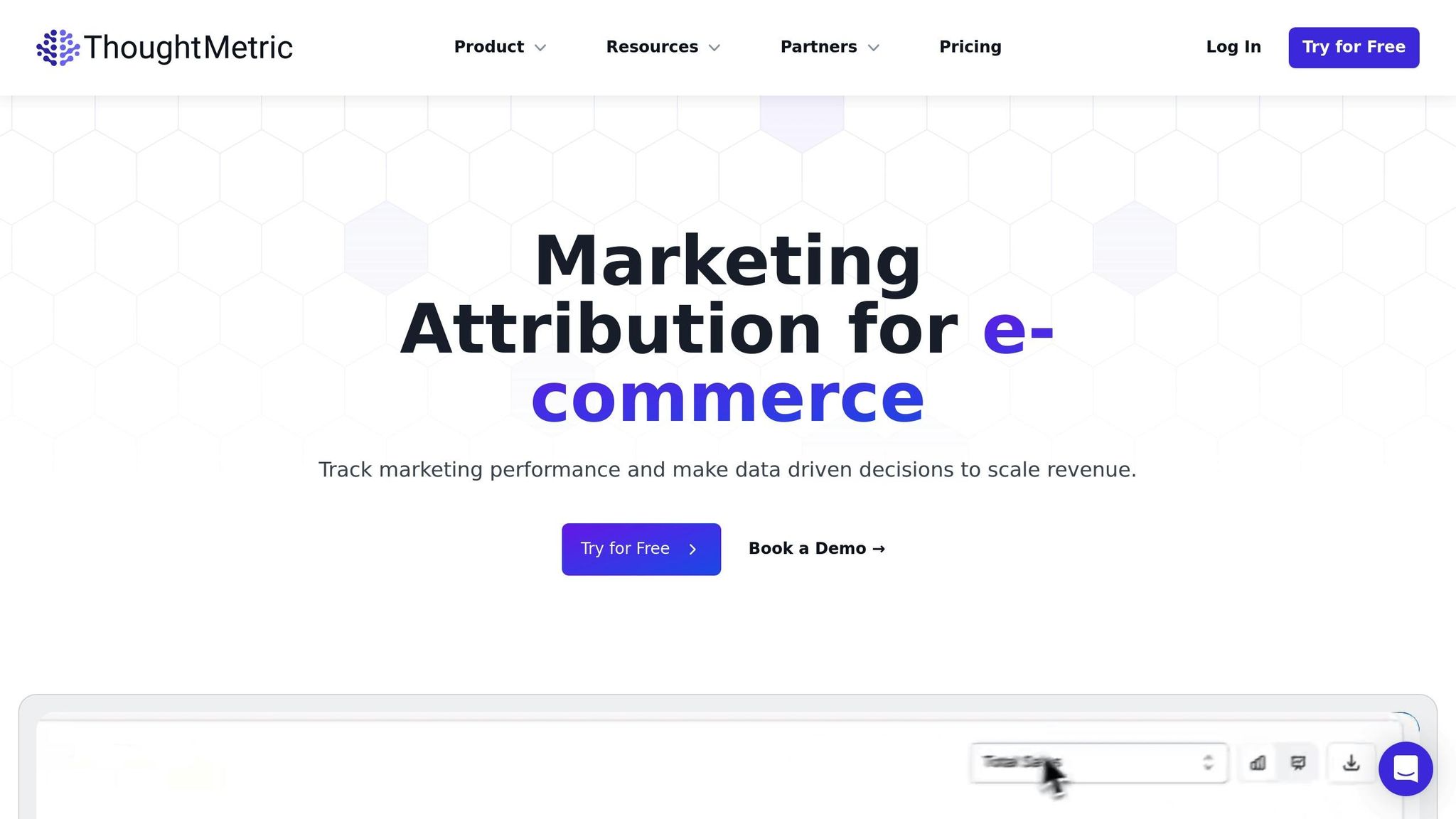
ThoughtMetric is designed as a multi-touch attribution tool tailored for e-commerce businesses. Its primary focus is to bring together various marketing touchpoints, making it easier to understand how each interaction contributes to overall performance.
Flexible Attribution Models
One of ThoughtMetric's standout features is its ability to adapt to different attribution models. Businesses can choose strategies that best fit their campaign goals and data insights, ensuring their approach aligns with their unique needs.
Seamless Data Integration
The platform connects with both marketing and e-commerce tools, bringing together online and offline data into a single, unified system. This integration simplifies data management and provides a clearer picture of marketing efforts.
Built for Enterprise Demands
ThoughtMetric is equipped to handle the complexities of enterprise-level operations. It can process large volumes of data efficiently while supporting multiple users, ensuring smooth performance even under heavy workloads.
Advanced Reporting and Visualization
With customizable dashboards and automated features, ThoughtMetric provides actionable insights to track and evaluate campaign performance effectively. These tools make it easier for teams to stay on top of their marketing efforts.
Next, we’ll dive into how Hyros tackles enterprise attribution challenges.
sbb-itb-5174ba0
4. Hyros
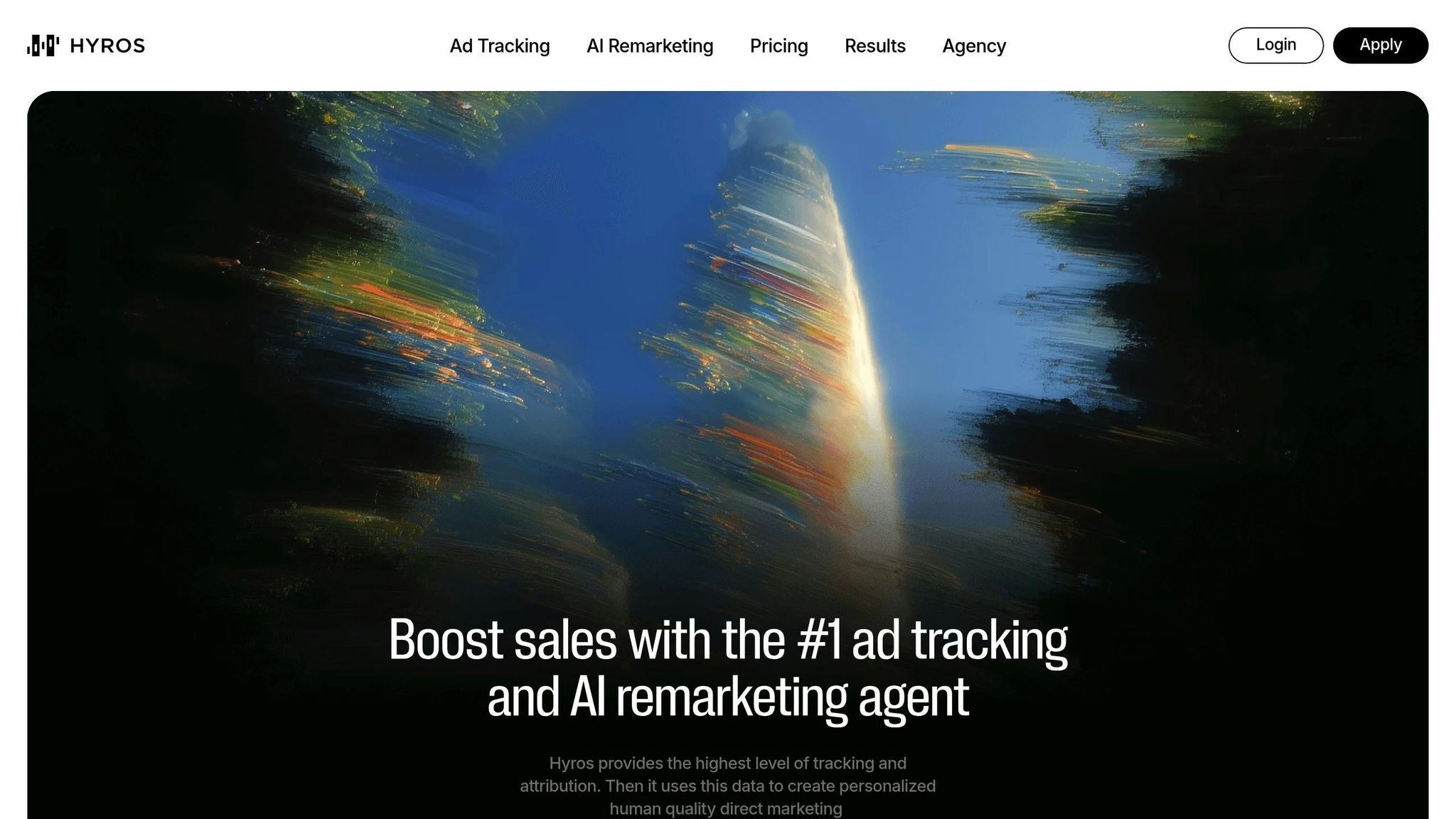
Hyros takes attribution a step further by connecting offline phone interactions to digital marketing campaigns, making it a go-to solution for businesses that rely heavily on sales calls.
Hyros is designed to track and attribute phone interactions, offering a seamless way to tie offline activity to online marketing efforts. This makes it particularly valuable for enterprises managing multi-channel campaigns.
Flexible Attribution Models
Hyros provides a range of attribution models - like first-touch, last-touch, and linear - allowing businesses to align tracking with their specific goals. It can attribute phone call conversions to various marketing touchpoints, such as social media ads, Google Ads, or email campaigns. This adaptability is especially useful for businesses navigating complex customer journeys that span both online and offline channels.
Seamless Data Integration
The platform integrates with major advertising networks like Facebook Ads, Google Ads, TikTok, and YouTube, as well as leading CRMs. By using dynamic number insertion and call tracking, Hyros links phone conversions back to their digital origins, giving businesses a complete picture of the customer journey.
Built for Enterprise Needs
Hyros handles high-volume call tracking effortlessly, making it ideal for large enterprises. It supports role-based access for teams and can manage multiple campaigns simultaneously, all while maintaining precise data accuracy.
Real-Time Reporting and Insights
Hyros provides real-time dashboards that combine digital and phone conversion data in one place. Automated reports deliver key insights, such as cost per call and call-to-conversion rates, and can be integrated with business intelligence tools for deeper analysis.
Next, we’ll explore how RollWorks approaches enterprise attribution with its focus on account-based marketing.
5. RollWorks
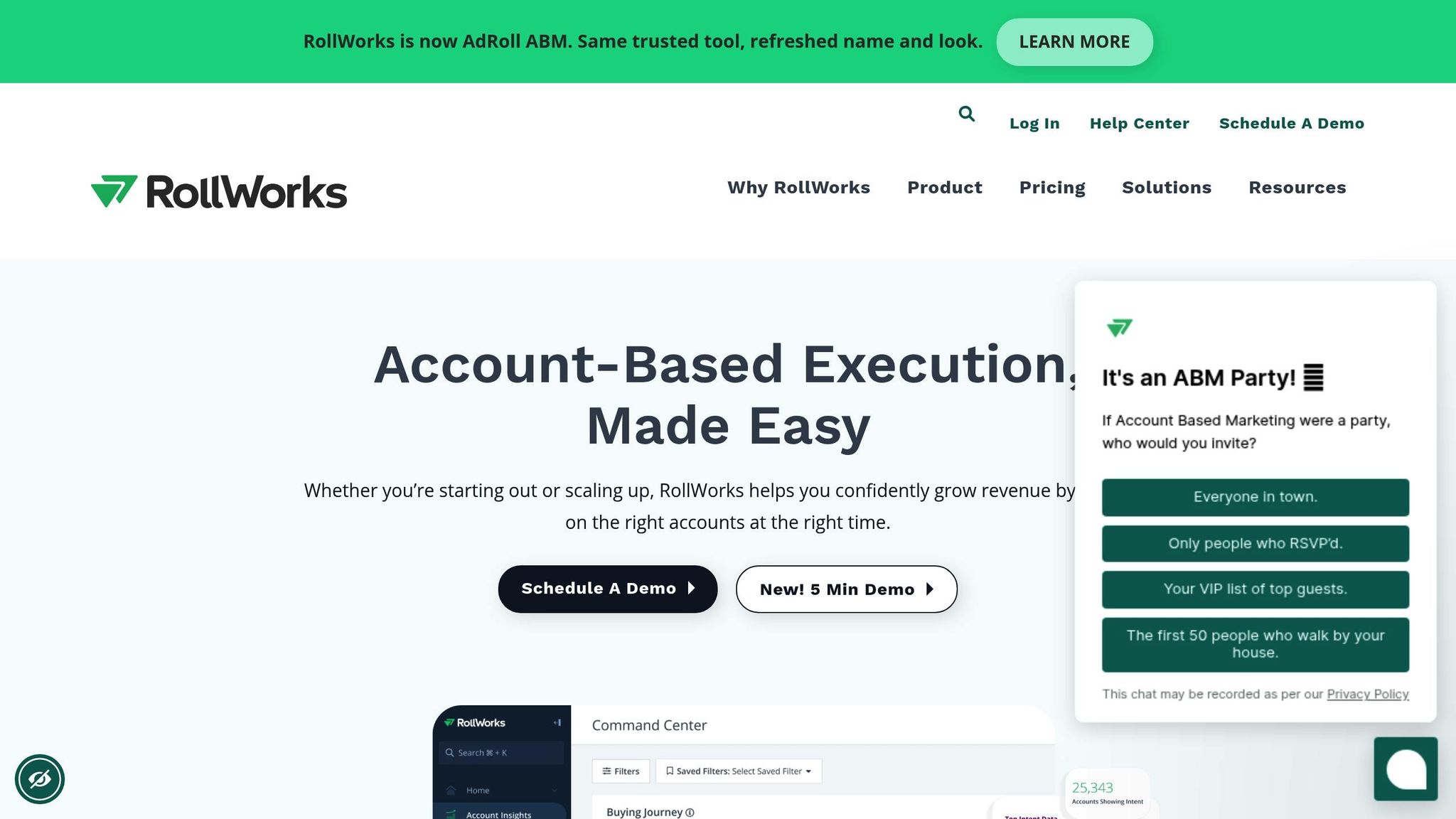
RollWorks provides detailed reporting tools that focus on delivering in-depth campaign insights at the account level. It zeroes in on key metrics to help marketers understand performance and conduct thorough attribution analysis.
The platform tracks three primary metrics: engagement rates, conversion depth, and account penetration. Engagement rates reveal how target accounts interact with ads, conversion depth measures progress through the sales funnel after ad exposure, and account penetration shows how well campaigns reach multiple stakeholders within a buying committee.
By connecting ad exposure directly to revenue, RollWorks helps marketing teams refine their strategies, improve campaign outcomes, and speed up deal closures.
Check out the comparison chart below to see how these tools measure up.
Tool Comparison Chart
Here’s a breakdown of essential multi-touch attribution features, spotlighting ThoughtMetric's verified capabilities.
| Feature | Salesmate | Karrot AI | ThoughtMetric | Hyros | RollWorks |
|---|---|---|---|---|---|
| Attribution Models | - | - | First-click, Last-click, Linear Paid, Position-based, Multi-touch | - | - |
| Attribution Window | - | - | 60 days | - | - |
| Key Integrations | - | - | Facebook Ads, TikTok Ads, Google Ads, Email providers | - | - |
| Reporting Focus | - | - | Product-level and creative insights | - | - |
| Pricing | - | - | Starts at $99/month for fewer than 50K pageviews; $599/month for 500K pageviews | - | - |
ThoughtMetric stands out by offering five attribution models, including a multi-touch model that captures the complexity of customer journeys by assigning credit to multiple touchpoints. Its position-based model is particularly effective for tracking both the initial interaction and the final conversion. With a 60-day attribution window, the platform is well-suited for businesses with longer sales cycles, ensuring a more comprehensive view of marketing efforts.
The pricing is straightforward, starting at $99/month for smaller traffic volumes and scaling up to $599/month for websites with 500,000 monthly pageviews. ThoughtMetric also integrates seamlessly with major advertising platforms like Facebook Ads, TikTok Ads, and Google Ads, alongside support for any email provider. These integrations enable marketing teams to consolidate data across channels and link attribution directly to revenue performance.
Conclusion
Multi-touch attribution tools have become a cornerstone of enterprise marketing strategies, offering marketers a clearer view of which touchpoints contribute to revenue. These tools go beyond the limits of traditional last-click attribution, providing deeper insights into the customer journey.
The reviews highlight how multi-touch attribution can transform marketing efforts. The key takeaway? Choose a tool that aligns with your organization's specific attribution needs and complexity.
By uncovering hidden conversion paths, multi-touch attribution helps improve ROI. It allows enterprises to shift budgets away from underperforming channels toward those that deliver greater impact, fine-tune campaign timing, and map the customer journey with greater precision.
For businesses looking to explore additional marketing analytics tools, the Marketing Analytics Tools Directory (https://topanalyticstools.com) is an excellent resource. This platform offers a wide range of tools for real-time analytics, campaign performance tracking, audience insights, A/B testing, and business intelligence. With these resources, enterprises can make smarter, data-driven decisions and refine their marketing strategies. Multi-touch attribution not only sharpens decision-making but also drives accountability across marketing efforts.
FAQs
What makes multi-touch attribution tools different from single-touch models, and why are they better suited for enterprises?
Multi-touch attribution tools differ significantly from single-touch models by distributing credit across multiple touchpoints throughout the customer journey, instead of focusing solely on the first or last interaction. This approach offers a clearer and broader perspective on how different marketing channels influence conversions.
For businesses running intricate, multi-channel campaigns, this method proves incredibly useful. It helps companies allocate their marketing budgets more effectively, fine-tune strategies, and make decisions backed by data to boost ROI. By analyzing the complete customer journey, businesses can pinpoint which efforts are delivering results and adjust their campaigns to achieve the best outcomes.
What should large enterprises consider when choosing a multi-touch attribution tool?
When choosing a multi-touch attribution (MTA) tool, large enterprises should focus on how well the tool integrates with their existing systems, such as CRMs, marketing platforms, and analytics tools. Seamless integration ensures your data flows smoothly across platforms, giving you a clearer picture of your marketing performance.
It's also important to select a solution that offers flexible attribution models - like linear, time decay, or data-driven approaches - so you can tailor the tool to your marketing strategies and better understand your customer journey.
Other critical factors to assess include whether the tool complies with data privacy regulations, offers customization options, has an easy-to-navigate user interface, and provides dependable customer support. Think about the tool's ability to grow alongside your business and whether its pricing aligns with the value it brings to your marketing efforts. A scalable and cost-efficient solution can make a big difference in driving results for your enterprise.
How can enterprises keep their multi-touch attribution tools effective with changing privacy laws and cookie restrictions?
To keep up with changing privacy laws and restrictions on cookies, businesses need to shift toward cookieless attribution methods that respect user privacy. This involves techniques such as relying on aggregated or anonymized data and making the most of first-party data. These strategies are crucial for maintaining accurate tracking while complying with regulations like GDPR and CCPA.
By emphasizing first-party data and privacy-conscious tracking, companies can ensure their attribution tools stay effective without depending on third-party cookies. Beyond meeting legal requirements, these methods also help foster consumer trust in an era where privacy matters more than ever.
